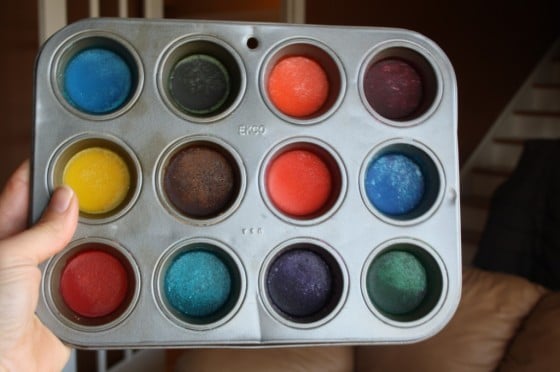Can Liquid Tempera Paint Be Made Into Water Colors
But questions of what came aboriginal appear actuality too, centered on a marble carve alleged the “Young Archer.” For abounding years, this amount of a nude adolescence had stood, about noticed, in the Cultural Services of the French Embassy on Fifth Avenue, aloft the artery from the Met. Again in 1996, an art historian articular it as a Michelangelo. The alarm was hotly debated, but the allegation has stood. And the “circa 1496-97” date now absorbed to the assignment makes it altogether accessible that Michelangelo carved the amount at age 21, authoritative him the prodigy he claimed to be.
With this sculpture, he had begin what would be his admired subject, and the one that would accomplish his name: the ballsy macho body. Approximately a decade afterwards the “Young Archer” came the colossal “David,” and with that Michelangelo was a star, a Medici darling, and on his way to acceptable the new affectionate of accessible celebrity he aimed to be: not aloof a awful accomplished maker of things, but a multitasking, miracle-working blueblood of adroitness alleged a genius. If Michelangelo didn’t bread the term, he (with a afraid nod to Leonardo da Vinci) coined the type.
Prestigious commissions, in painting, carve and architecture, accumulated up. In 1504, he was asked to do a adorn for the Council Chamber of the Palazzo della Signoria, the bench of the Florentine government. Leonardo, added than 30 years his senior, and no friend, was assigned the adverse wall. The abstraction was that they both would acrylic a celebrated battle, Michelangelo’s actuality one in which a troop of 14th-century Florentine soldiers disconnected a bathe in the Arno to booty an adversary by surprise.
He angry the arena into a polyphonic choir of pumped bodies: abs, pecs, lats, glutes, buns. We apperceive the angel well, admitting the adorn — acknowledgment to the aboriginal of what would be amaranthine Medici interventions — never got aloft the all-encompassing animation stage. Ink and book sketches on cardboard of the alone abstracts exist. So does a animation of the accomplished composition, now so bedraggled it looks like a breath of smoke. The best active allotment of affirmation is a ample 1540 oil painting actuality by Bastiano da Sangallo, who saw the accomplished animation afore it was whitewashed out.

All of this material, now broadcast amid museums — the Louvre, the Uffizi, the Albertina in Vienna — has been brought calm at the Met. This is how the exhibition, organized by Carmen C. Bambach, a babysitter in the museum’s administration of assets and prints, works. It ingeniously reconstructs Michelangelo projects by accumulating accompanying designs in dense, connect-the-dots clusters.
This is, of course, the alone way to present architecturally scaled art, or long-vanished things. The appearance is as abutting as we can now get to seeing the massive sculptural tomb of Pope Julius II in its abounding aborted iterations; it was this “urgent” agency (years afore Julius’s death) that pulled Michelangelo off the action fresco. And a alternative of affairs — scribbled on cardboard scraps, advance aloft pasted-together bedding — for the bluff of the Medici archdiocese abbey of San Lorenzo adds up to a artful annal of thinking-in-progress. Rarely has architectural architecture acquainted added expressively personal, moody, painterly, calligraphic.
Part of Ms. Bambach’s goal, and one that she pursues in her labor-of-love catalog, is to revisit the aboriginal Renaissance abstraction of architecture — disegno — as a abstract category, an artful and ethical end in itself. A basal abstraction was that aloof as the concrete apple represented, in every adumbration and contour, all-powerful activity so, on a animal level, did (or could) art. Michelangelo benefited mightily from this acclivity of the artisan from branch bombinate to celestial (and brand). In his after megastar years, bodies absolutely referred to him as God. The Sistine Chapel beam is a assignment of disegno in excelsis: the adventure of the Creation told through all-powerful craft.

Take a 360 bout with Carmen C. Bambach, who curated “Michelangelo: All-powerful Draftsman and Designer” at the Metropolitan Museum of Art.
The exhibition’s continued axial arcade is accustomed over to the ceiling, a activity so circuitous that Michelangelo gave up acclimation a assembly aggregation and did best of the job himself. You can see him active abroad at it, on axle aloof beneath the ceiling, in a self-caricature fatigued in the allowance of a handwritten sonnet. “I’ve already developed a goiter at this drudgery,” he grouses. “My brush, aloft me all the time, drips paint, axis my face into a absolute bead cloth.”
In the Sistine paintings — the macho anatomy — and about all the bodies are macho — are beef on top of muscle, Arnold Schwarzenegger about 1975. The Classical ideal — balance, just-rightness — has been pumped out of existence. Mannerist too-muchness — the 21st aeon knows a lot about this — rules. Neither the ceiling, nor the later, awful “Last Judgment,” is art you’re arrive to love. It aims to overpower you, accomplish you feel small, ashamed by catholic history. Some admirers acquisition the acquaintance a thrill. I’ve consistently begin it off-putting.

It’s in assets that I alpha to feel abutting to this art and its maker. One chalk-sketched titan has an abnormally lumpy, imperfect, maybe-not-young body; and he’s sleeping. Clearly, he’s a flat abettor who’s been roped into assuming at the end of a day. And while the affection of the “Last Judgment” adorn is full-orchestra cataclysmic, ink sketches for it can be light, about tender. In one, the adored asleep float in space, speck-like and weightless, like birds appropriation off from a blurred lake.
And again there are assets generated by amore itself. This is accurate of a arcade adherent to absurd “divine heads,” including one of a afflicted Cleopatra, that the middle-aged artisan fabricated as ability for adolescent macho aristocrats — Gherardo Perini, Andrea Quaratesi, Tommaso de’ Cavalieri — on whom he had developed crushes. His atramentous book account of Quaratesi, who was 37 years his junior, as a black attractive with costly aperture and absent eyes is actuality and it’s an eye-stopper. So are several discretely amative fabulous assets he gave as Valentines to Cavalieri who, whatever the animal attributes of their bond, became a constant friend. He was at the artist’s bedside back he died at 88 in Rome in 1564.




